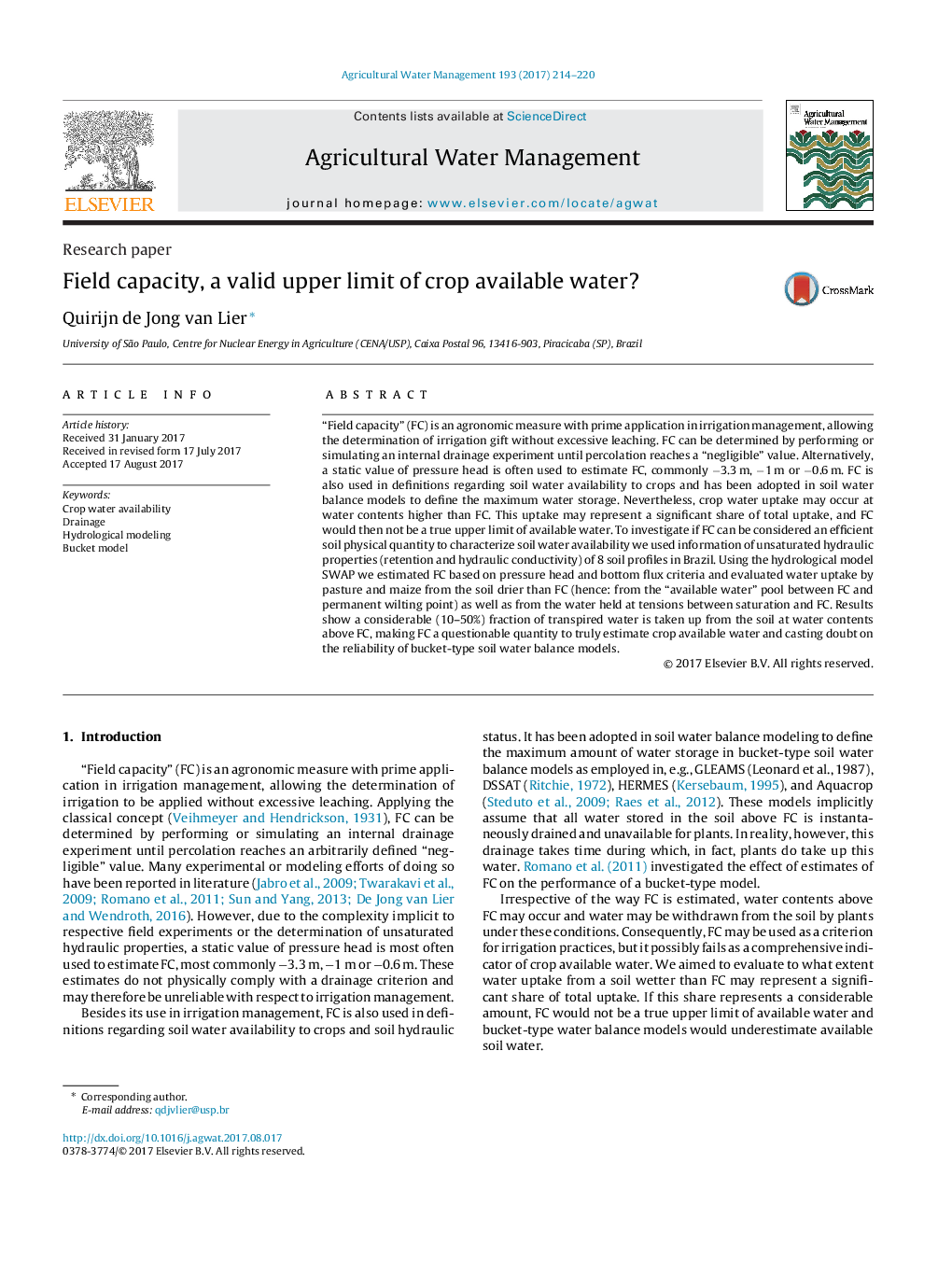| Article ID | Journal | Published Year | Pages | File Type |
|---|---|---|---|---|
| 5758272 | Agricultural Water Management | 2017 | 7 Pages |
Abstract
“Field capacity” (FC) is an agronomic measure with prime application in irrigation management, allowing the determination of irrigation gift without excessive leaching. FC can be determined by performing or simulating an internal drainage experiment until percolation reaches a “negligible” value. Alternatively, a static value of pressure head is often used to estimate FC, commonly â3.3Â m, â1Â m or â0.6Â m. FC is also used in definitions regarding soil water availability to crops and has been adopted in soil water balance models to define the maximum water storage. Nevertheless, crop water uptake may occur at water contents higher than FC. This uptake may represent a significant share of total uptake, and FC would then not be a true upper limit of available water. To investigate if FC can be considered an efficient soil physical quantity to characterize soil water availability we used information of unsaturated hydraulic properties (retention and hydraulic conductivity) of 8 soil profiles in Brazil. Using the hydrological model SWAP we estimated FC based on pressure head and bottom flux criteria and evaluated water uptake by pasture and maize from the soil drier than FC (hence: from the “available water” pool between FC and permanent wilting point) as well as from the water held at tensions between saturation and FC. Results show a considerable (10-50%) fraction of transpired water is taken up from the soil at water contents above FC, making FC a questionable quantity to truly estimate crop available water and casting doubt on the reliability of bucket-type soil water balance models.
Keywords
Related Topics
Life Sciences
Agricultural and Biological Sciences
Agronomy and Crop Science
Authors
Quirijn de Jong van Lier,
